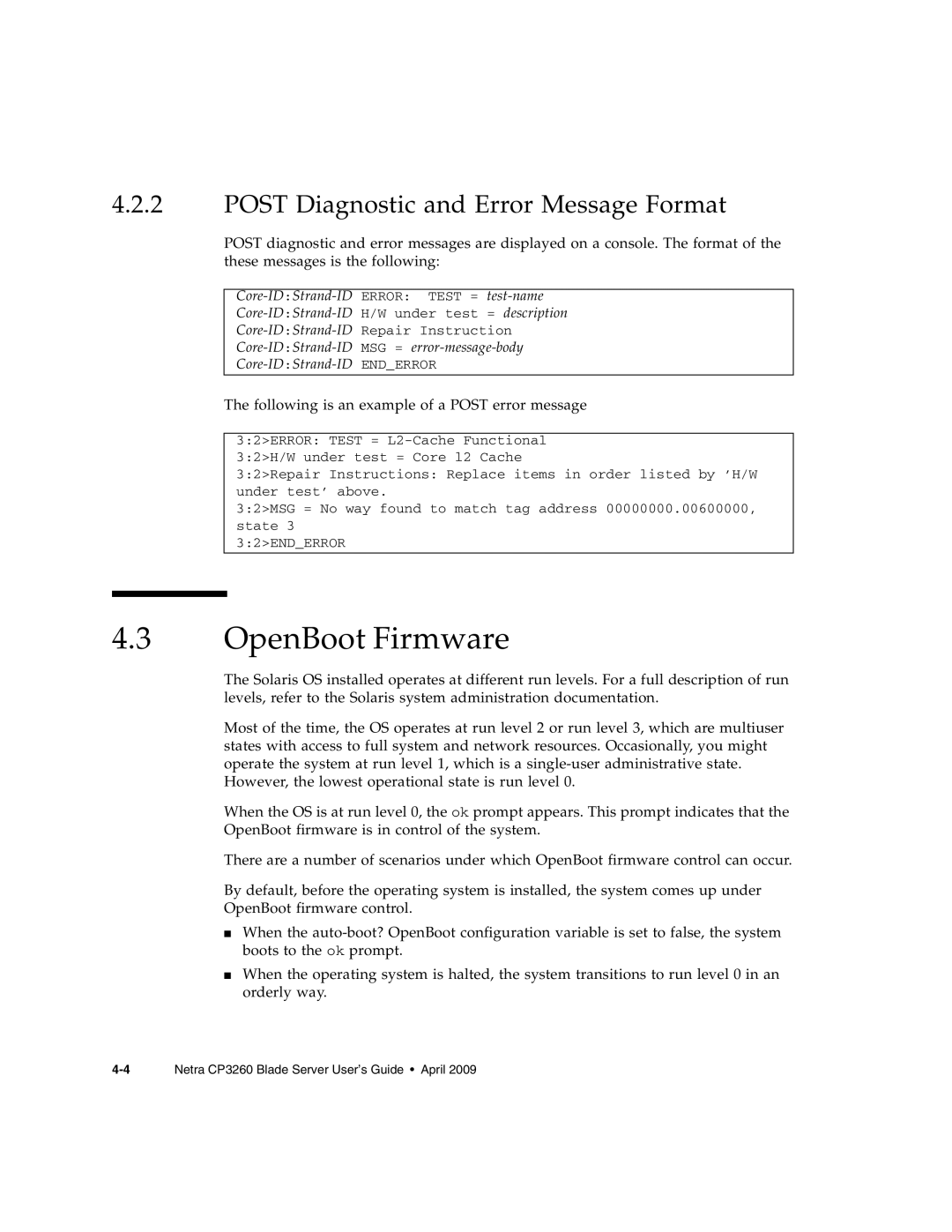
4.2.2POST Diagnostic and Error Message Format
POST diagnostic and error messages are displayed on a console. The format of the these messages is the following:
The following is an example of a POST error message
3:2>ERROR: TEST =
3:2>Repair Instructions: Replace items in order listed by ’H/W under test’ above.
3:2>MSG = No way found to match tag address 00000000.00600000, state 3
3:2>END_ERROR
4.3OpenBoot Firmware
The Solaris OS installed operates at different run levels. For a full description of run levels, refer to the Solaris system administration documentation.
Most of the time, the OS operates at run level 2 or run level 3, which are multiuser states with access to full system and network resources. Occasionally, you might operate the system at run level 1, which is a
When the OS is at run level 0, the ok prompt appears. This prompt indicates that the OpenBoot firmware is in control of the system.
There are a number of scenarios under which OpenBoot firmware control can occur.
By default, before the operating system is installed, the system comes up under OpenBoot firmware control.
■When the
■When the operating system is halted, the system transitions to run level 0 in an orderly way.
